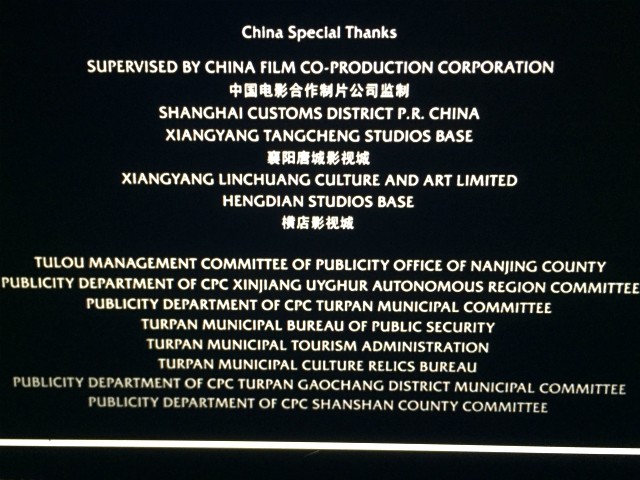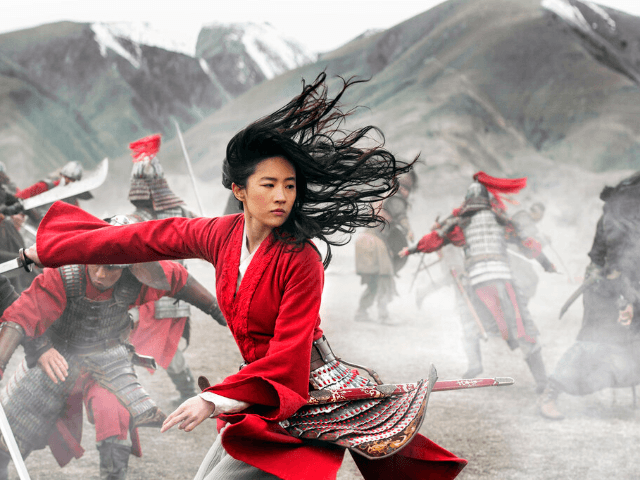Local police in the Chinese city of Turpan, Xinjiang, confirmed to Radio Free Asia (RFA) this weekend that at least eight Uyghur concentration camps are operating in the northwestern city. Disney producers thanked Turpan officials in the credits of the recently released film Mulan for help with filming there.
Mulan was released in the U.S. via Disney+ stream on September 4 and in Chinese theaters on September 11.
Disney thanked the Turpan Municipal Bureau of Public Security in the end credits of Mulan, an entity sanctioned by the administration of U.S. President Donald Trump in July for facilitating human rights abuses in the region. Mulan’s end credits also acknowledged several Chinese Communist Party (CCP) publicity offices throughout Turpan and greater Xinjiang, as parts of the movie were shot there. Additional filming took place in New Zealand.
Among the entities thanked is the Publicity Department of CPC Xinjiang Uyghur Autonomous Region, a CCP propaganda commission that has previously tried to justify the existence of Uyghur internment camps in the territory. The commission insists that the camps are “voluntary vocational centers,” despite multiple reports suggesting that CCP authorities forcefully detain ethnic Muslim Uyghurs and other minorities native to Xinjiang in the facilities. According to the accounts of escaped Uyghurs and other witnesses, detainees are subjected to CCP political indoctrination, forced labor, and torture in the camps.

Police from Turpan recently confirmed to the U.S. government-funded Radio Free Asia (RFA) that several concentration camps continue to operate in the city, which is 75 percent Uyghur. Most of Turpan’s camps are situated in “the upper part of town,” a Turpan Bazaar Police Department officer told RFA anonymously, adding that these camps are just a 30-minute drive from his police station.
“Some of them are located in different parts [of Turpan], such as Re-education School No. 1, Re-education School No. 2, and Re-education School No. 3, and so on,” he said, using the official CCP name for the concentration camps.
“I have heard there are altogether eight of them,” the police officer added.
Another Turpan police officer told RFA he had been assigned to work in various internment camps in the city.
“I started working in the camps in November 2017 and I stopped in July this year,” he said.
“I stayed in three different camps — Re-education School No. 1, then School No. 5, and finally No. 6. Re-education School No. 1 is located in Xinzhan [the New Railway Station] and women work there. No. 5 and No. 6 schools are located in the Xinqu [New City district],” the police officer explained.
Describing conditions at the facilities, the man said that “there are normally 36 people in a cell” at each camp, and detainees are “taken outside to get an hour of fresh air once a month.”
The officer revealed that “a dozen people died” in the five-month period he worked at Camp No. 5, although he did not provide RFA with details about what caused the detainees’ deaths.
U.S. senator Josh Hawley (R-MO) accused Disney of “whitewashing genocide” by collaborating with CCP officials in Xinjiang in the making of Mulan. In a letter made public on September 9, Hawley demanded Disney be held accountable for its flagrant support of human rights abusers.
Disney offered a minimal acknowledgment of the international criticism Mulan has received. Speaking at Bank of America’s Virtual 2020 Media, Communications & Entertainment Conference, Disney CFO Christine McCarthy said that Mulan’s unsavory connection to human rights abuses had “generated a lot of issues” for the film studio.
“In an effort to accurately depict some of the unique landscape and geography of the country of China for this period drama, we filmed scenery in 20 different locations in China. It’s common knowledge that, in order to film in China, you have to be granted permission. That permission comes from the central government,” she explained.
“So, in our credits, it recognized both China and locations in New Zealand. I would just leave it at that, but it has generated a lot of issues for us,” McCarthy said, adding, “I’m not a box-office prognosticator, but it has generated a lot of publicity.”
“Let me just put something into context. The real facts are that Mulan was primarily shot — almost in entirety — in New Zealand,” the CFO insisted.

COMMENTS
Please let us know if you're having issues with commenting.